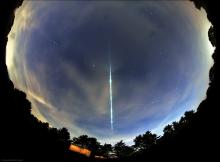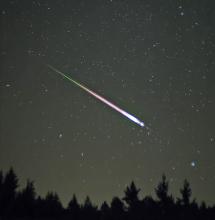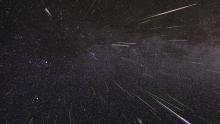Listen to today's episode of StarDate on the web the same day it airs in high-quality streaming audio without any extra ads or announcements. Choose a $8 one-month pass, or listen every day for a year for just $30.
You are here
Geminid Meteors
A busy but short-lived meteor shower should be at its peak on Sunday night. It’s one of the year’s best. But it spikes quickly, so there aren’t many meteors before and after the peak. And the shower itself won’t stick around for much longer.
The Geminid shower is named for the constellation Gemini. If you trace the paths of the meteors, they all converge in that region of the sky.
The shower was first recorded in 1862, and it’s been getting “busier” ever since. During its early decades, the numbers peaked at about 15 to 20 meteors per hour. Since then, though, the numbers increased. Today, peak rates are about 150 per hour.
That’s because the path of the debris that causes the meteors is being shifted by the gravity of Jupiter. It’s been pushed enough that Earth now travels through the middle of that path. By the end of the century, though, the stream of debris will stay outside Earth’s orbit, so the Geminids will vanish.
For now, though, look for the meteors beginning as early as 9 or 10 p.m. Many Geminids are especially bright, so the shower is pretty easy to see. And the Moon will be new on the night of the 13th, when the shower’s at its best, so it won’t interfere with the fireworks.
To view the Geminids, find a safe skywatching site away from city lights. Although the meteors appear to “rain” into the sky from Gemini, they can appear anywhere, so you don’t have to look in a particular direction to see them.
Script by Damond Benningfield






